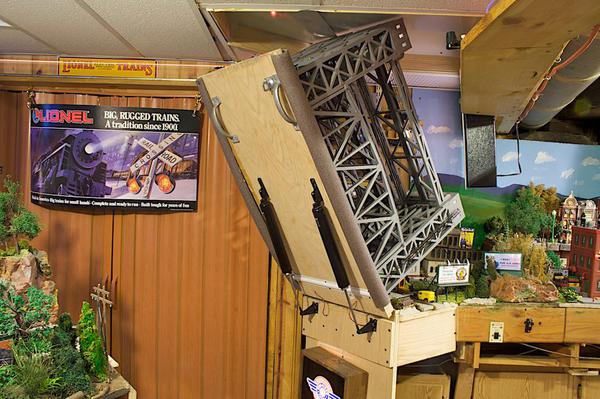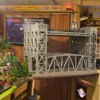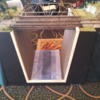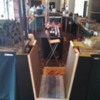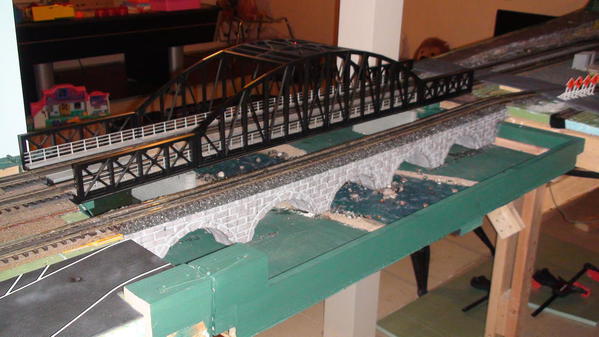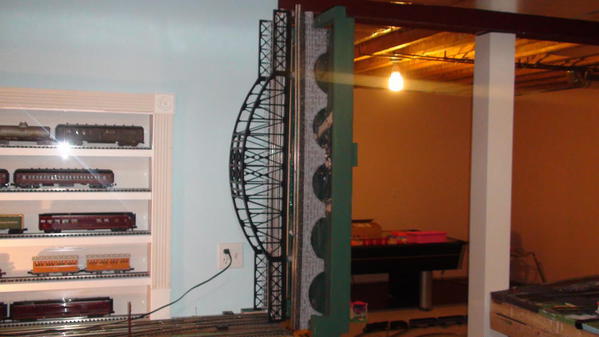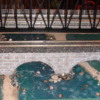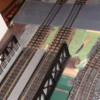Originally Posted by Ron045:
How would you wire it??? not really sure.
Currently I have a wire from the center rail of the bridge track soldered to a piece of metal on the bridge. What piece of metal? And why do it; it's not mentioned in the bridge's instructions.
On the blocked section I have a wire from that center rail soldered to a piece of metal on the end of the bench work. Again, why? No additional wiring is mentioned in the instructions.
When the bridge is closed the two pieces of metal are touching and the block is energized. When the bridge is open, nothing can flow to the center rail.
I selected the center rail just so I would not have to wire this twice by using the two outside rails.
I'm still confused on why some of you recommend isolating the outside rails. Does it really make a difference of isolating the center rail vs. outside rail? It seems to me either way you are killing power. Can anyone explain that to me?
I'm thinking now that we are talking wiring and electricity vs the length of a track block that this is now technically in the wrong forum.
Thanks!
Ron
I confess that I am utterly confused by the statement in your original post that the slower train can stop without going off the table with the bridge up; but, a train traveling faster won't stop because a lead passenger car spans the center rail connecting the isolated track section and the non-isolated track section. Wouldn't the slower train also fail to "clear" the non-isolated track approach to the isolated section?
As for isolating the outside rails rather than the center rail, my only response would be that the instructions say to isolate the inside, not the outside, rail.
Question for Ron: What passenger cars are you using? I'm not familiar with the wiring of the various mfgr's wiring; but, a PW Lionel passenger car and LIONEL's early '90's cars used separately wired incandescent bulbs. In other words, such a car could straddle the isolated and non-isolated trackage and one bulb would be lit and the other dark if the isolated section was w/o power.
Suggestion: Wire the approach tracks and bridge per LIONEL's instructions that are linked above; and, lengthen the isolated track section if necessary.





